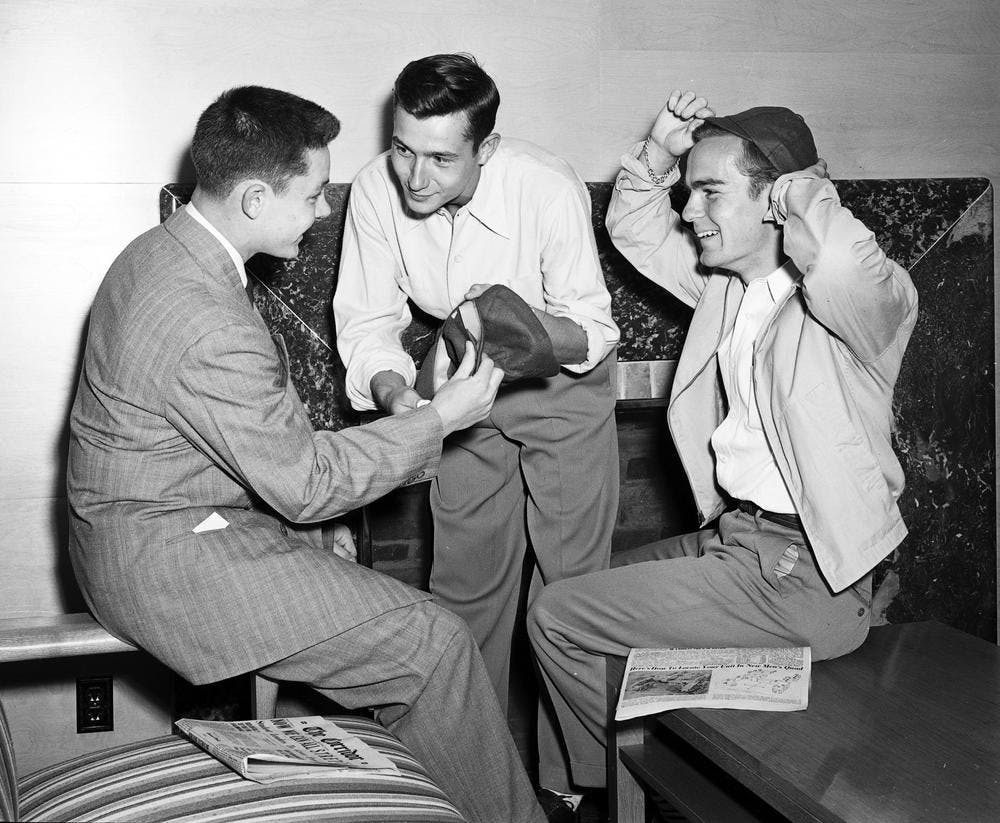One hundred years ago, freshmen associated the fall with underclassmen rivalry, hazing and green hats.
IU freshmen from the 1910s to the 1940s participated in a school tradition of wearing green hats. Those who did not comply risked hazing — such as involuntary haircuts — from sophomores and upperclassmen.
The University Archives said the green caps in question were also known as pods, the freshmen Rhiny pods. These were close-fitting, had three-inch bills, and a red patch on the front.
The IU Traditions Committee, which preceded the IU Union Board, announced in 1913 that freshmen are required to wear the official green cap while on campus.
The Skull and Crescent Club, an honorary fraternity, influenced and regulated the freshmen classes with their own policies. As an exclusive group, student and cadet, Marvin Shamon, wrote in his research that the club relied on sophomores to “take care” of “straying” freshmen.
A former IDS issue from 1935 said that the Skull and Crescent ordered freshmen after their campaign night in September to wear the pod until 5 p.m. on school days. They were required during indoor and outdoor events and any violations resulted in severe punishment at the freshman representative’s discretion.
“Still scared to death for fear sophomores will cut my hair," freshman Ralph J. Garriot wrote in his diary in 1923. "Ate supper at the Annex. Hundreds of the 'Freshies' have had their hair cut.”
Shamon noted that the sophomores, who typically felt the freshman had to earn their higher class status at the end of the year, initiated the Burning of the Pods. According to the Archives, this was a ceremony where the freshmen waded down the campus river and burned their green pods in a bonfire.
At the Burning of the Pods, freshmen ended their “year of bondage” and became the sophomores for the next class. According to the archives, due to “the prevalence of broken limbs and gory wounds,” the tradition was temporarily discontinued in 1938.
“Freshmen beware — some moonlit night you may be attacked, scalped, and have your head painted green,” Sue Ann Savage, a former IDS staff writer, wrote in an article in 1938.
The threat of shaving freshmen’s heads was never carried out, but the sophomore-freshman rivalry grew exponentially.
The tradition remained one of IU’s most iconic freshman traditions among campus organizations. According to the Ohio State University’s archives, the pods grew popular nationwide, especially with Big Ten schools.
“It was something that brought the students together and unified the freshman class in a way," Director of University Archives Dina Kellams said. "However, the haircuts and enforcement were extreme.”
The Skull and Crescent began to receive more backlash about the pod burning ceremony and their treatment against those who did not attend. Members believed that the Burning of the Pods justified their existence, but were later informed of the dangerous consequences and told to reconsider.
Pods were not as popular in the 40s, nor a symbol of hierarchy. The Archives confirm that fraternities requested members to purchase them during the ‘50s and ‘60s, but mainly for a nostalgic purpose. The Skull and Crescent Club is last seen in the 1969 Arbutus with only a few wearing the traditional beanie. The pods have not been seen since.
Kellams said she thought the tradition dissolved when the student population grew.
“Having so many students doesn’t quite provide the same sense of unity as before with the smaller classes,” Kellams said.






